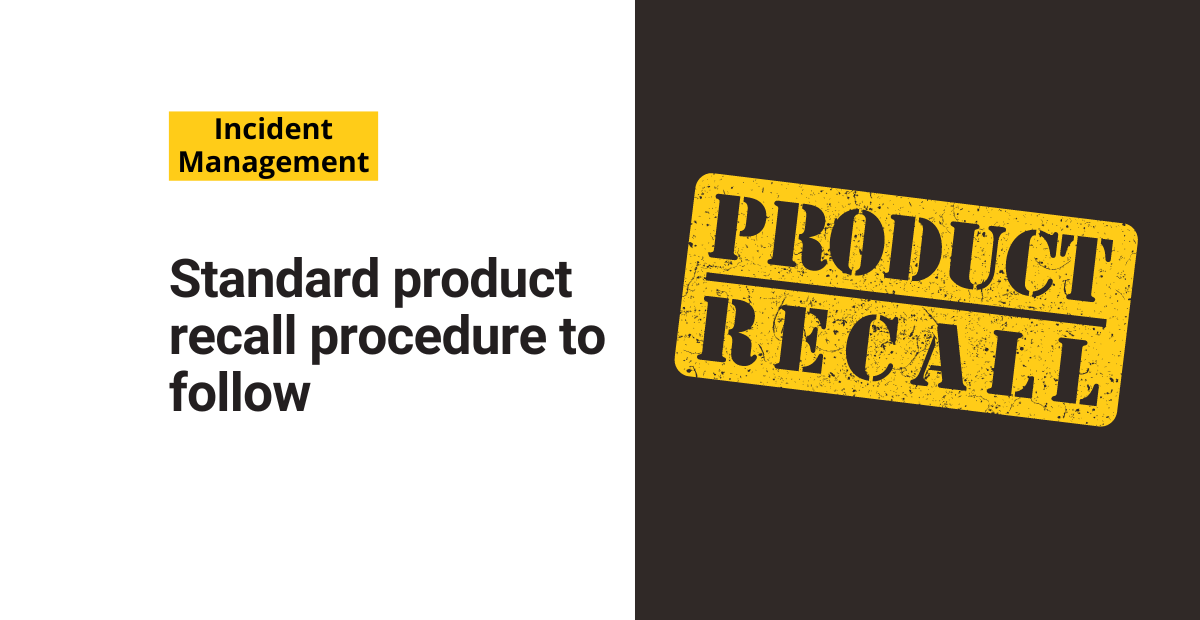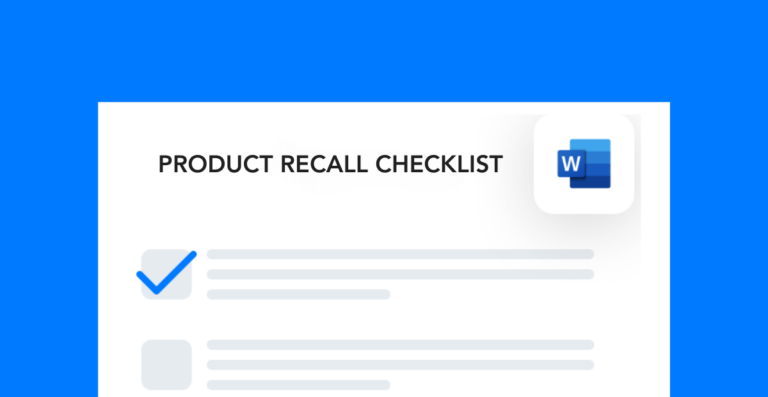There are six main steps in the product recall procedure, which are outlined in this post. Please note that this is a broad overview of the entire process.
In general, recalls are complex events that require diligent communication and documentation. Use these steps as the basic framework for whichever process you implement across your facilities.
Step 1: Hazard analysis
In the event of a recall, perform a full hazard analysis of the affected product(s). This analysis process may involve the input of a third-party laboratory for product testing and evaluation.
Step 2: Classification
Once the analysis is complete, classify the recall according to either USDA or FDA guidelines:
I: Serious or Dangerous
II: Potentially Dangerous
III: Least Dangerous
Then, inform the appropriate regulatory agency of the recall.
Step 3: Production stop
This step involves three major activities:
- Immediately stop production of the products affected under this recall.
- Remove inventory from your distribution channel so it cannot leave your facility.
- If immediate threats are present, quarantine the affected products away from others.
Step 4: Customer notification
Then, notify customers who may have purchased the product to ensure that you have a way to verify receipt of these notifications.
Step 5: Product collection
Once customers have received the recall notification, you will need to begin collecting and documenting the products you receive.
During this step, you’ll need to keep a record of the volumes of product affected by the recall:
- Amount of affected inventory in your facility
- Amount of product that went out through distribution channels
- Amount of product sent back to your facility
Depending on the nature of the issue, you can either fix or destroy the recalled products. This should be done by your facility’s quality control department to ensure that the process satisfactorily resolves the original defect.
Step 6: Investigation and corrective action
Following the notification, collection, and handling of affected products, it’s critical to complete a root cause investigation as soon as possible.
This investigation process should include:
- A determination of the root cause
- Creation of corrective actions
- Delegation and tracking of corrective actions
- Disciplinary or legal actions depending on the nature of the root cause
During this proces, you’ll need to compile your findings into a detailed report as well. The report should include:
- Product details (name, qty., manufacturer, etc.)
- Label and packaging information
- Lot or batch numbers affected by the recall
- Root cause of the recall
- Timeline of events (when was the issue discovered, when did notifications go out, etc.)
- Information regarding the amount of product recalled, reprocessed, and destroyed
- Copies of all communications sent out to customers, distributors, and regulators
- Contact information for the recall team leader(s)
The two main keys to a successful product recall procedure are efficiency and documentation. Especially for Class I recalls, it’s imperative to notify stakeholders of an issue and get the affected product out of circulation as quickly as possible.
Following the steps in this recall process is essential for fixing the conditions that created the issue in the first place. Overall, detailed documentation allows you, or anyone else outside of your organization, to understand the events surrounding the recall. This information can help inform both you and your industry peers of how to prevent recalls in the future.
Other posts you might like…
No posts

